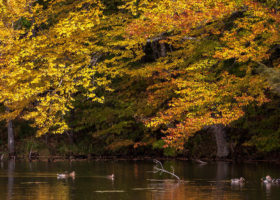
Field Guide to September 2020
One morning, you wake to a nip in the air, and notice subtle changes in the quality of the light. Suddenly, it’s September. There’s a lot going on this time of year, if you know where to look. Here is your field guide to life on the move, and some natural history tidbits to discover this fall.
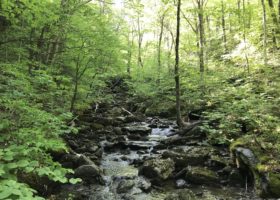
In the Field with VCE’s Bird-friendly Maple Efficacy Study–Part II
Sam Blair, a UVM senior and seasonal field biologist working with Steve Faccio on VCE’s Bird-friendly Maple Efficacy Study, offers his reflections from the field in this second update.
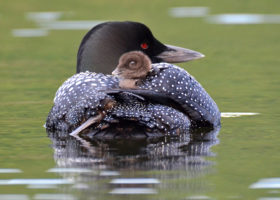
Mid-July Loon Update
It’s mid-July, height of “loon season,” and just a few days away from Vermont’s 38th annual LoonWatch Day on Saturday, July 18. VCE’s loon biologist, Eric Hanson, gives us an update from Vermont’s lakes and ponds (with photos you won’t want to miss).

In the Field with VCE’s Bird-friendly Maple Efficacy Study
Here’s an update from the field (with amazing photos) from Sam Blair, a UVM senior and seasonal field biologist working with Steve Faccio on VCE’s Bird-friendly Maple Efficacy Study.
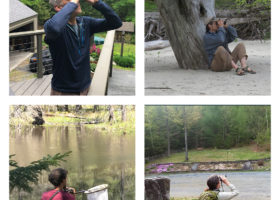
VCE Staff “Bird in Place” for Backyard Bird Quest 2020
VCE’s annual Birdathon took on a new form this spring, as the Green Mountain Goatsuckers “birded in place” for Backyard Bird Quest 2020. Sallying forth individually from our home bases—some even outside Vermont—we collectively found 134 species during the day, raising crucial funds for VCE’s wildlife conservation work.
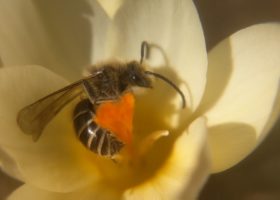
Discover the Bees in Your Backyard this Spring
Spencer Hardy, VCE’s Vermont Wild Bee Survey Project Coordinator, shares a video from the field, and how you can get involved in the Vermont Wild Bee Survey.
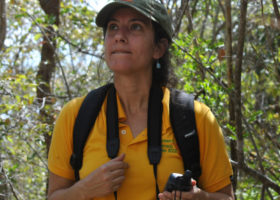
VCE Colleague Yolanda León Receives Prestigious Conservation Award
Longtime VCE conservation partner and Advisory Council member Yolanda León recently made us all proud by receiving the prestigious 2019 Partners in Flight Individual Leadership Award.
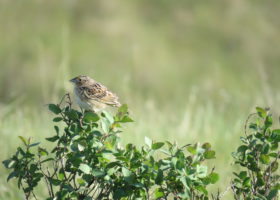
Of Birds and Buckets: Nocturnal Flight Call Recordings Shine A Light on Migration Timing
Most of our knowledge regarding the migration timing of songbirds comes from birding observations made during the day, even though much of the actual migration occurs at night. Is this a problem? As it turns out, it might be.
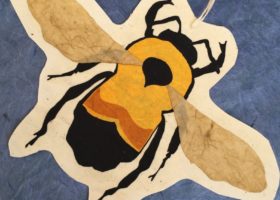
Gifts for the Conservation-minded Person Who Has Everything
“Honestly, I really don’t need anything.”
We all have them. People in our lives who are impossible to shop for, because they have everything they need. The holidays are stressful enough without the added burden of having to think outside the box (and quickly) to make sure you have something for everyone. We at VCE would like to help you out this season by providing some creative, conservation-themed solutions to your gift-giving dilemmas!
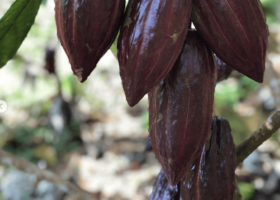
Chocolate: It’s for the Birds
Help us spread the word about an exciting initiative to conserve Bicknell’s Thrush wintering habitat. And eat more cacao. It’s good for you and the birds!
